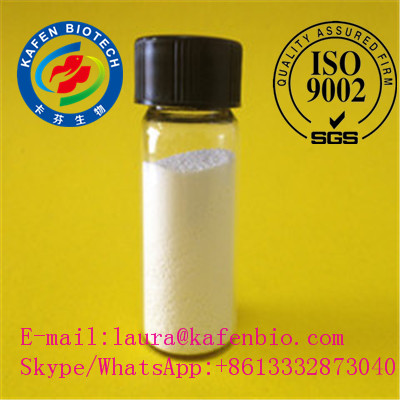| Message: | Basic Info.
Product Name: Tetracaine
Synonym: Anetain, Amethocaine, Pontocaine,Ametop,Dicaine
CAS: 94-24-6
MF: C15H24N2O2
MW: 264.36
EINECS: 202-316-6
Assay: 99%
Quality Standards: EnterpriseStandard/Pharma Grade
Appearance: White powder
Package: 25kg/Drum
Usage: Tetracaine is a topical local anesthetic for the eyes. Tetracaine works by interfering with entry of sodium ions into nerve cells. This reduces the ability of nerves to generate an impulse and send pain sensations.
Description:
Tetracaine (INN, also known as amethocaine; trade name Pontocaine. Ametop and Dicaine) is a potent local anesthetic of the ester group. It is mainly used topically in ophthalmology and as an antipruritic, and it has been used in spinal anesthesia. It is on the World Health Organization's List of Essential Medicines, a list of the most important medication needed in a basic health system.
(1) In biomedical research, tetracaine is used to alter the function of calcium release channels (ryanodine receptors) that control the release of calcium from intracellular stores. Tetracaine is an allosteric blocker of channel function. At low concentrations, tetracaine causes an initial inhibition of spontaneous calcium release events, while at high concentrations, tetracaine blocks release completely.
(2) Tetracaine is the T in Tac, a mixture of 5 to 12 per cent tetracaine, 5M(per myriad), a half per mille (0.5‰), or .05 per cent (1 part in 2000) , and 4 or 10 per cent hydrochloride used in ear, nose & throat surgery and in the emergemcy department where numbing of the surface is needed rapidly, especially when children have been injured in the eye, ear, or other sensitive locations.
(3) Tetracaine is synthesized from 4-butylaminobenzoic acid. The ethyl ester is formed through an acid-catalyzed esterification reaction. Base-catalyzed transesterification is achieved by boiling the ethyl ester of 4-butylaminobenzoic acid with excess 2-dimethylaminoethanol in the presence of a small amount of sodium ethoxide.
|
 my account
my account
 log out
log out
 my account
my account
 log out
log out
